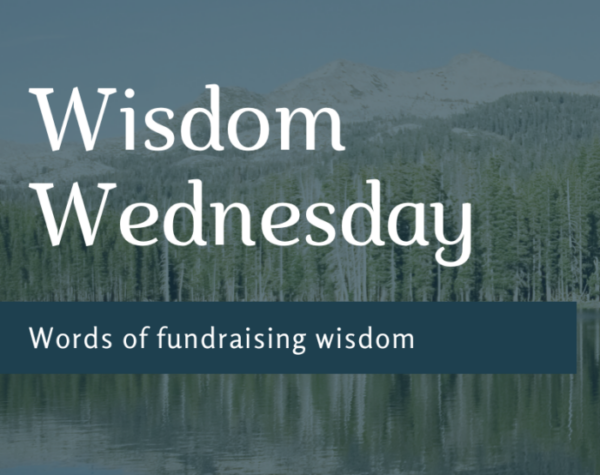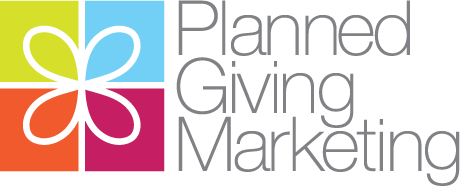3 Ways to Connect to Planned Giving Donors
Have you ever heard the saying, “There’s three sides to every story: his side, her side, and the truth”? Personally, I’ve always found that humorous. But I’ve realized something—it describes some of the conversations we have with planned giving donors.
Think about it: when you talk to planned giving donors (or prospects!) about estate gifts, your side is to communicate as clearly as possible the tax benefits, legal requirements, and giving options.
When planned giving donors and prospects hear your pitch, their side is to run through a list of objections, thinking about their family, other nonprofits, and even their own security.
The third side of the story is the “truth.”
This place–where your opportunity meets their objection–can become an a-ha moment for both of you. Here, you have the chance to hear what’s most important to your potential planned giving donor and offer a planned gift that provides a real path to get there.
It becomes an a-ha moment for the planned giving donor when he or she realize you understand their real motivation in leaving a gift, and can show them a way to take care of their responsibilities and still leave a lasting legacy.
When we tweak our message with the goal of hitting this harmonious understanding, we can make all our communication—and our marketing—more effective.
A recent experience helped me realize a faster way to get to that a-ha moment.

Getting to the A-Ha Moment
A few months ago, we overhauled this site (pgmarketing.com). The entire site has been changed—stripped down, redesigned, and streamlined. Remodeling our “digital home” is similar to keeping our real homes looking updated and modern. It forces us to ask important questions: does anyone use this? Do we still want this? Can this be updated?
In asking these questions, we had to evaluate if what we are communicating on our website is helping our clients have an a-ha moment.
- Do they get an accurate picture of our personality and understand we’re listening, have their best interest in mind, and are easy to work with?
- Can they clearly differentiate what we do and they understand we’re how we’re different and more personal from other planned giving marketing companies?
- Is the design is user friendly so it’s easy for someone to get in touch with us to ask questions?
We had to look at the website from the prospect of the user: what they need and what they want—not just what we want to say. This process of tweaking our message to get at that a-ha moment is a lot easier because we followed a template of questions.
It’s the same type of template we use when we create planned giving websites for our clients.
The end result is that it’s easier to get answers, make a connection, and engage. These tactics work with any type of communication: a website, mail, and in person. Give them a try.
Talk about the DESTINATION, not the JOURNEY
When a travel company sells a vacation, they don’t show pictures of rush hour traffic, long TSA lines, or that dreaded crowd at bag claim. I mean, that is what you’re going to have to go through before you get to your destination, right?
But of course they don’t use pictures of those moments. They show pictures of people relaxing under palm trees or smiling from the deck of a boat. Because they know you aren’t buying the route.
You’re buying the destination, and they’re trying to tap into the emotion you’ll feel when you arrive.
They want you to imagine yourself in the future—after you’ve made the great decision to book a vacation.
The same thing happens when you talk to prospects. It’s tempting to talk about the logistics of planned gifts. The details. The process. But that’s not what inspires your prospect to imagine. That’s just the route they take to get there.
All of the communication with prospects—whether in person or in your marketing—should inspire desire.
- Desire to be philanthropic.
- Desire to be part of a larger, longer, lasting story.
- Desire for stability and security—in their future, and in mission they love.
A message that causes prospects to visualize the destination opens possibility. It helps them imagine a new outcome—and it inspires them to engage.

Talk about the WHO, not the WHAT
There’s a lot of talk in the nonprofit world about storytelling, making your planned giving donor the hero, and a general theme to talk about them and not about ourselves. That’s all true. But I want to come at this from a different angle.
In this case, when I say talk about the “who” and not the “what,” I want to differentiate between your organization and your mission. See, your organization is easy to talk about: the history, the impact, the staff, students, programs, buildings, awards, and etc. That’s the WHAT.
The WHO is your mission. Think of who your mission effects: the leaders you’re training, students you’re educating, the marginalized you’re helping, the aging adults you’re caring for.
This WHO has the power to tap into the eternal within all of us. It reminds us we are a continuing story from those who went before us to those who come after us.
It anchors us as the bridge between the before and after, elevating the conversation from the temporal.
One of the best ways to speak about the who instead of the what is to tell stories of individuals—who you’re helping. The lives that have been impacted because of your mission. It’s not enough to say, “We fed this many families last year.” Make it personal. “We fed this many families last year, families like ….” Tell personal stories. Use personal pictures.
Conversations that are too broad and too generic (whether through marketing or in person), don’t have the ability to impact your planned giving donor any more than legal jargon does. But messages that have personal, real-life stories of how your mission changes lives—that is the message that piques curiosity. That’s the message they pay attention to, the one that inspires them to engage.
Think in terms of STEPPING STONES, not the LONG JUMP
I remember the original planned giving websites had so much information packed onto the first page that it was hard to know what to read first. There was content on the types of planned gifts, there was language planned giving donors should include in their will, there was a form to fill out to inform the organization of the estate gift.
Talk about making a big jump!
I’m not sure this style of communication ever worked. Possibly, but I doubt it. It’s just not the way most people gather information—it’s too much too fast. Most of us take small steps toward our destination, learning along the way, being pulled toward things that interest us.
When we learn anything new, we start with a desire to know, and then slowly take incremental steps of learning. We want to play the piano. We learn the keys. We learn the scales. We play a simple song.
It’s the same thing with planned gifts. Planned giving donors want to invest in something that matters. They learn about people they can help. They connect to an organization who helps these people, too. They read stories about people who have been impacted.
Notice I haven’t said anything about learning how to invest yet.
That’s because before you ever get to the long jump of the how, you have to walk gingerly over the stepping stones to get to the other side of knowledge.
Because we just redesigned our website, I’m acutely aware of how most planned giving websites communicate the message of planned gifts. Many of them go right for the long jump. But that can confuse your planned giving donors and prospects. And a confused mind always says no.
One step at a time
Instead, think in terms of stepping stones. Inspire planned giving donors with stories of people who have been impacted. And stories of other planned giving donors who used to be just like the prospect—wanting to help, looking to align with a mission.
The only thing your planned giving website needs to do is inspire a planned giving prospect to take the next step, which is to contact you. It’s not likely a website will lead them to the final step, which is make the actual donation. It’s too far of a jump (and too personal of a decision!)
Think of how you can streamline your message so the reader—your planned giving prospect—can take one more step. When you make it easy and risk free, they are more likely to engage and give you the opportunity to lead them to the destination they desire.
 Download our FREE Marketing Guide to discover three proven strategies that always capture the attention of donors and increase their curiosity about planned gifts.
Download our FREE Marketing Guide to discover three proven strategies that always capture the attention of donors and increase their curiosity about planned gifts.
Putting it all together
It’s easy to talk about what we should do when we communicate, but it’s not always easy to implement these tactics—especially when your responsibilities pull you in so many directions.
But we want to make it easier for you to engage your prospects.
We understand the importance of your online message and your planned giving website. And we want to help you refine that message so it’s easier than ever for your planned giving donors and prospects to get in touch with you.
That’s why, in celebration of our new site, we’re offering a very special deal for organizations to get new planned giving website of their own! Our PGMicrosites are streamlined and effective so planned giving prospects linger longer and find what they need.
They’re an exceptional value for organizations because they have a an affordable set up fee, no long-term commitments, and a low annual maintenance cost. The best part is, we can usually give you a new planned giving website in as little as 30 days.
Your new website will talk about the WHO. It will help your prospect visualize the DESTINATION, and it will help them walk to the next STEPPING STONE to contact you.
It’s everything you need—but nothing that you don’t. So your prospect will be able to get to their A-HA moment and engage.
Get a Modern Planned Giving Website
A new planned giving website gives you everything you need and nothing that you don't! The clean, modern, responsive design make it easy for your donors and prospects to engage. Call now to get a PGMicrosite.

70 ½ vs. 73?
70 ½ vs. 73? We’ve been hearing some confusion from a lot of clients around the age split of 70 ½ vs. 73 for gifting from an IRA. Which is the correct age? What are the rules around each age? When it comes to marketing this great gifting strategy, the problem is both...

Wisdom Wednesday – Are you 85?
Are you 85? I didn't think so ...We've talked about the mindset of our most senior donors in the past. And we'll most likely talk about it forever. Why? None of us know what it's like to be 85 - unless we're 85.We've all been 16 before. Most of us have even recovered...

Generational Marketing – Traditionalists
Generational Marketing - TraditionalistsTraditionalists include those aged 77+ and will be a key group when it comes to your planned giving outreach.Learning how to communicate with this portion of the population is important for your success. Discovering the nuances...
Tech Tuesday – IRS Discount Rate
IRS Discount Rate With the signing of the Consolidated Appropriations Act of 2023 and the provision referred to as Secure 2.0, there is newfound interest around Charitable Gift Annuities* (CGAs). Because of this we’re all becoming reacquainted with the IRS...

